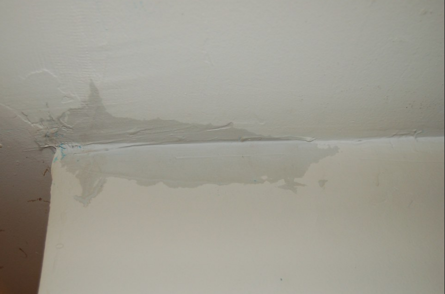Do's as well as Don'ts During Water Damages Emergencies.
Do's as well as Don'ts During Water Damages Emergencies.
Blog Article
On this page down the page you might get additional sound material all about Ways to Reduce The Risk Of Fire And Water Damage.

Water offers life, water breach on components where it's not expected to be can result in damage. Homes with water damages scent old as well as moldy.
Water can originate from lots of sources such as tropical cyclones, floods, burst pipes, leakages, as well as sewer concerns. In case you experience water damage, it would be great to know some safety and security preventative measures. Here are a couple of guidelines on just how to handle water damages.
Do Prioritize Home Insurance Coverage Coverage
Water damages from flood because of hefty winds is seasonal. You can also experience an unexpected flooding when a faulty pipeline suddenly bursts into your house. It would certainly be best to have residence insurance that covers both acts of God such as natural catastrophes, as well as emergency situations like busted plumbing.
Do Not Neglect to Switch Off Energies
In case of a catastrophe, particularly if you reside in a flood-prone area, it would be recommended to turn off the main electrical circuit. This removes power to your entire home, avoiding electrical shocks when water comes in as it is a conductor. Moreover, do not neglect to turn off the main water line shutoff. Furniture will move around as well as cause damages when floodwaters are high. Having the primary shutoff turned off prevents additional damage.
Do Keep Proactive and Heed Weather Condition Signals
Listen to emptying warnings if you live near a lake, river, or creek . Doing so lowers potential home damage.
Do Not Neglect the Roof
You can stay clear of rainfall damage if there are no holes and also leakages in your roofing system. This will prevent water from moving down your walls and saturating your ceiling.
Do Focus On Small Leakages
A ruptured pipe does not occur over night. Normally, there are red flags that show you have damaged pipes in your house. For example, you might discover gurgling paint, peeling wallpaper, water touches, water stains, or leaking audios behind the wall surfaces. At some point, this pipe will rupture. Ideally, you need to not wait for things to rise. Have your plumbing fixed before it results in large damage.
Do Not Panic in Case of a Ruptured Pipeline
Keeping your presence of mind is important in a time of crisis. Stressing will just compound the problem due to the fact that it will suppress you from acting quickly. Timing is vital when it comes to water damage. The longer you wait, the even more damages you can expect. Therefore, if a pipeline bursts in your house, quickly turned off your main water shutoff to cut off the source. Unplug all electrical outlets in the location or turn off the circuit breaker for that part of the residence. Call a reputable water damage restoration specialist for assistance.
Water offers life, water breach on components where it's not supposed to be can result in damages. Residences with water damages smell stuffy and also old.
Water damage from flooding dues to hefty winds is seasonal. You might discover gurgling paint, peeling off wallpaper, water touches, water stains, or trickling noises behind the wall surfaces. When it comes to water damage, timing is key.
Some Do's & Don't When Dealing with a Water Damage
DO:
Make sure the water source has been eliminated. Contact a plumber if needed. Turn off circuit breakers supplying electricity to wet areas and unplug any electronics that are on wet carpet or surfaces Remove small furniture items Remove as much excess water as possible by mopping or blotting; Use WHITE towels to blot wet carpeting Wipe water from wooden furniture after removing anything on it Remove and prop up wet upholstery cushions for even drying (check for any bleeding) Pin up curtains or furniture skirts if needed Place aluminum foil, saucers or wood blocks between furniture legs and wet carpet Turn on air conditioning for maximum drying in winter and open windows in the summer Open any drawers and cabinets affected for complete drying but do not force them open Remove any valuable art objects or paintings to a safe, dry place Open any suitcases or luggage that may have been affected to dry, preferably in sunlight Hang any fur or leather goods to dry at room temperature Punch small holes in sagging ceilings to relieve trapped water (don't forget to place pans beneath!); however, if the ceiling is sagging extremely low, stay out of the room and we'll take care of it DO NOT:
Leave wet fabrics in place; dry them as soon as possible Leave books, magazines or any other colored items on wet carpets or floor Use your household vacuum to remove water Use TV's or other electronics/appliances while standing on wet carpets or floors; especially not on wet concrete floors Turn on ceiling fixtures if the ceiling is wet Turn your heat up, unless instructed otherwise

I'm very fascinated with What You Can Do At Home To Prevent Fire And Water Damage and I really hope you enjoyed the new blog post. Loved our piece? Please share it. Let other people find it. Thanks for taking the time to read it.
Report this page